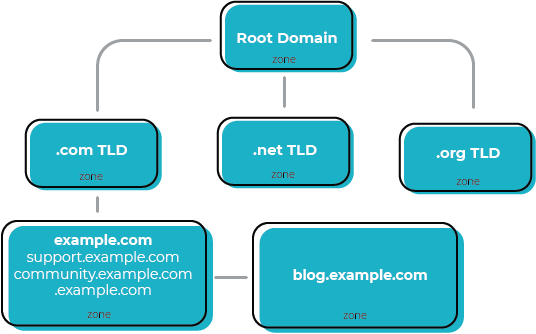
Resource Record Types
Resource Record Types
DNS in practice operates with a set of defined resource record types. They allow for different kinds of DNS resolutions to take place.
A record.
The most common resource record.
A record is used to point to certain domain name at a certain IPv4 address.
- Round robin
A Technique that balances traffic across multiple IPs.
A concept that involves iterating over a list of items one by one in an orderly fashion.
Quad A record
it is very similar to an A record except that it returns in IPv6 address instead of an IPv4 address.
CNAME record
This record is used to redirect traffic from one domain to another.
MX record
MX stands for mail exchange and this resource record is used in order to deliver e-mail to the correct server.
SRV record
SRV stands for service record, and it's used to define the location of various specific services.
While MX record is only for mail services, an SRC record can be defined to return the specifics of many different service types.
TXT record
TXT stands for text and was originally intended to be used only for associating some descriptive text with a domain name for human consumption.
TXT record is often used to communicate configuration preferences about network services that you've entrusted other organizations to handle for your domain.
Anatomy of a Domain Name
3 primary parts of a domain name
-
TLD or Top Level Domain ex) .com, .org etc..
There are only a certain restricted number of defined TLDs available. Administaration and definition of TLDs is handled bt a non-profit organization known as ICANN, or the Internet Corporation for Assigned Names and Numbers. -
Domain ex) facebook, google, instagran etc...
Domains are used to demarcate where control moves from a TLD name serverm, to an authoritative name server. -
Subdomain ex) www
It sometimes refers to as a host name if it's been assigned to only one host.
DNS Zones
An authoritative server is actually responsible for a specific DNS zones.

Zone file
Zoens are configured through what are known as zone files, simple configuration files that declare all resource records for a particular zone.
So a zonefile has to contain an SOA.
SOA record
SOA stands for Start of Authority.
This record declares the zone and the name of the name server that is authoritative for it.
You can find NS record along SOA record.
NS record
Indicates other name servers that may aolso be responsible for this zone.
Reverse lookup zone files.
These let DNS resolvers ask for an IP , and get the FQDN associated with it returned. These files are the same as zonwe files except, instead of A and quad A records, which resolve names to IPs.
PTR record
PTR stands for Pointer Record, it resolves an IP to a name.
